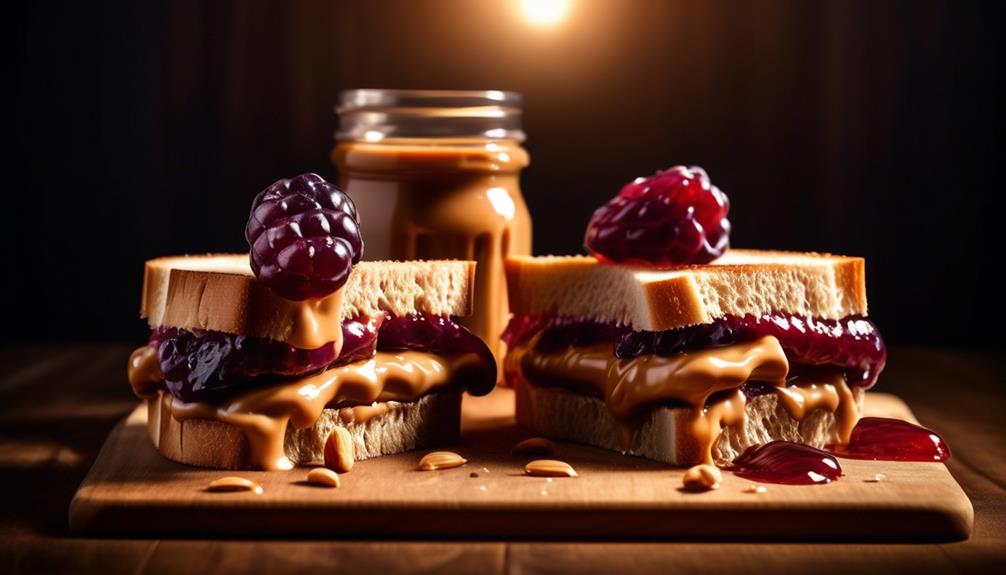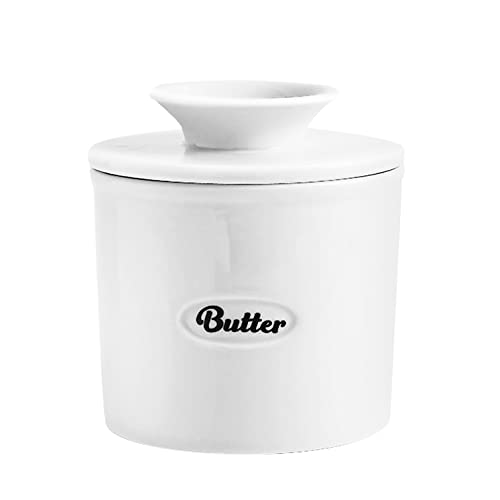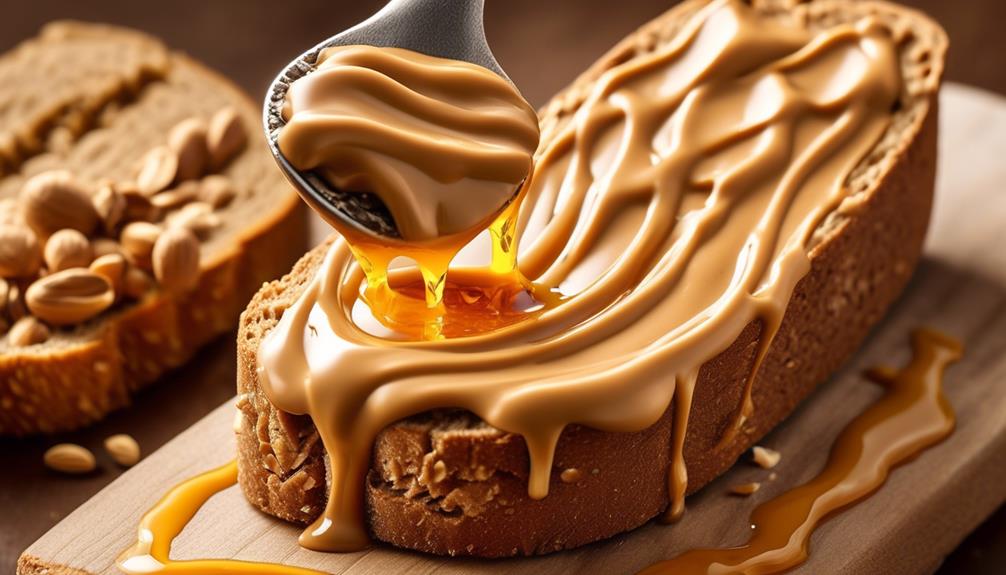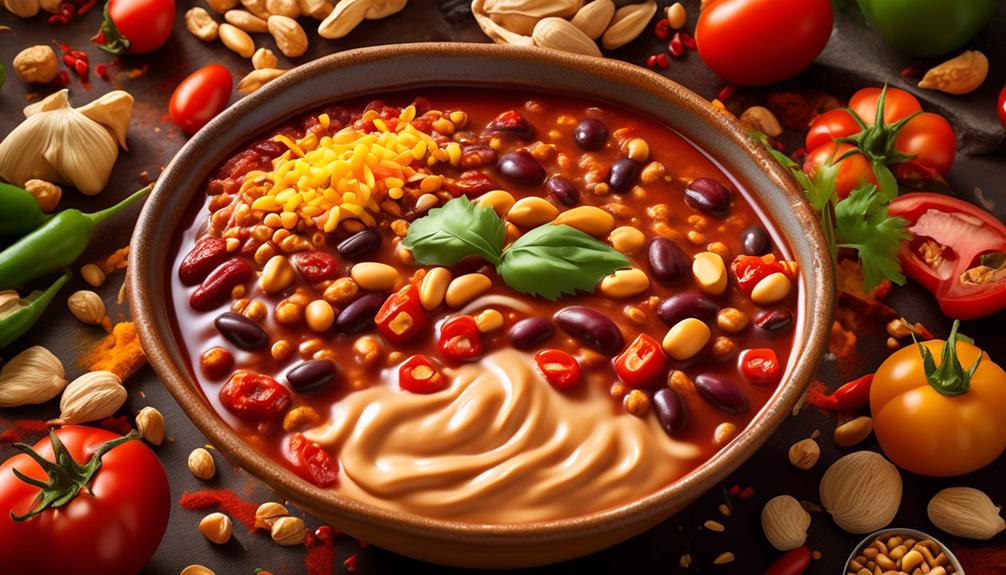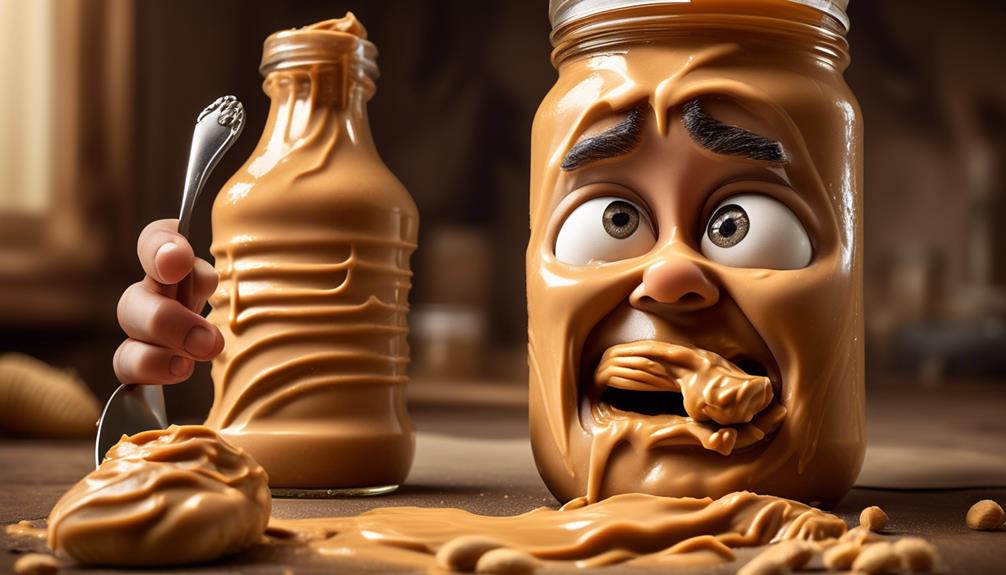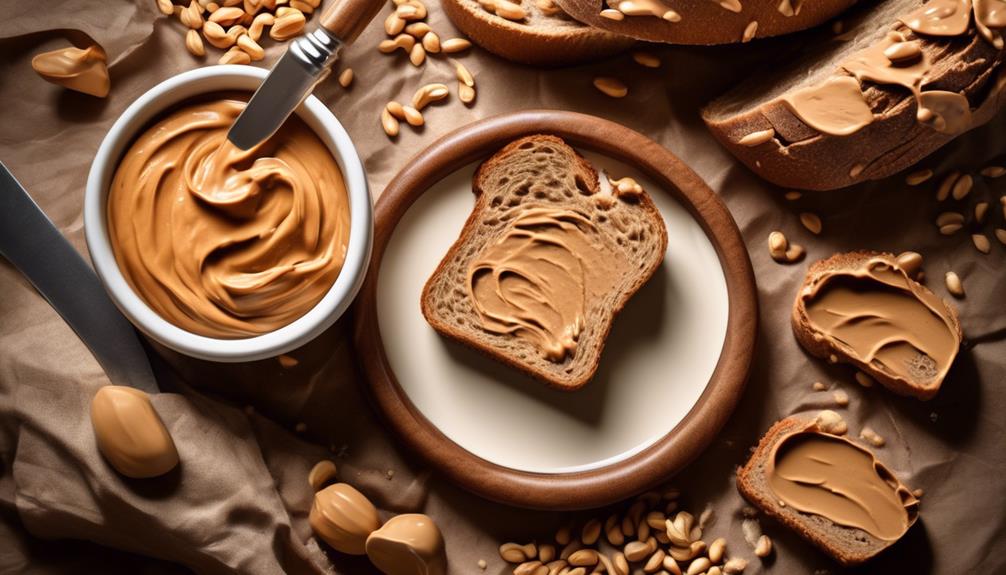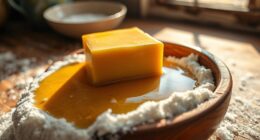They say there are two sides to every story, and the Peanut Butter Jelly Time standoff is no exception. As we dig deeper into this well-known incident, we discover a complex web of contradictory narratives and undisclosed agendas.
The question on everyone's mind remains: who truly made the Peanut Butter Jelly Time standoff happen, and what led to such a dramatic and tragic outcome?
As we dig deeper into the circumstances surrounding this unforgettable incident, we begin to unravel a complex narrative that challenges our preconceived notions and prompts us to reconsider the true origins of this fateful day.
Key Takeaways
- 'Peanut Butter Jelly Time' was created by musician Eric Alper and quickly became an internet sensation.
- The song's catchy tune and iconic dancing banana captured the attention of millions of internet users.
- 'Peanut Butter Jelly Time' gained widespread recognition and found its way into TV shows, commercials, and movies.
- The song's viral nature showcased the power of viral media in shaping contemporary pop culture.
The Origins of PB&J

The origins of the viral hit 'Peanut Butter Jelly Time' can be traced back to the early 2000s when musician Eric Alper created the catchy song that would become an internet sensation. The simple yet infectious tune, coupled with the iconic dance of a dancing banana, quickly captured the attention of internet users. The song's popularity spread like wildfire, finding its way into TV shows, commercials, and movies. Its impact was so significant that it garnered millions of views and shares online, making it a true internet sensation.
Eric Alper, the mastermind behind 'Peanut Butter Jelly Time', gained widespread recognition for this creation and other catchy songs such as 'Banana Phone,' 'I'm a Gummy Bear (The Gummy Bear Song),' 'It's Raining Tacos,' 'Noodle Dance,' and 'Chicken Monkey Duck.' Despite the tragic events in the creator's life, 'Peanut Butter Jelly Time' continues to be remembered and shared online, leaving a lasting legacy.
The song's success led to numerous parodies, remixes, dance challenges, and memes, further solidifying its place in pop culture. Its impact on supported browsers, JavaScript, and the origins of PB&J continues to be felt, demonstrating the enduring influence of this viral hit.
Historical Claims and Controversies

Amidst the tapestry of historical narratives and cultural phenomena, historical claims and controversies stand as critical points of debate and reinterpretation, shaping our understanding of the past. When delving into historical claims and controversies, it's essential to recognize the following key aspects:
- Nature of Disputes: Historical claims and controversies can stem from conflicting accounts of events, differing historical narratives, or the reinterpretation of existing evidence. These disputes often challenge established beliefs and interpretations, leading to intense scholarly debate and reevaluation of historical events and figures.
- Impact on Understanding: Engaging with historical claims and controversies enables us to gain a deeper understanding of the past and its implications for the present. By analyzing differing perspectives and reexamining evidence, we can uncover new insights and perspectives that enrich our comprehension of historical events and their significance.
- Role of Scholars and Researchers: Scholars and researchers play a crucial role in studying and analyzing historical claims and controversies. Their efforts contribute to the ongoing process of reevaluating historical narratives, challenging traditional interpretations, and fostering a more nuanced understanding of the past.
Delving into historical claims and controversies allows us to explore the multifaceted nature of history, encouraging a deeper appreciation for the complexities that shape our collective understanding of the past.
Cultural Impact and Evolution

Exploring the cultural impact and evolution of the 'Peanut Butter Jelly Time' phenomenon reveals the enduring influence of viral media on contemporary pop culture and its resonance within society. The viral nature of 'Peanut Butter Jelly Time' catapulted the song into popular culture, spawning a multitude of remixes, memes, and references across various forms of media. This enduring impact is evidenced by the song's continued presence in internet culture, demonstrating its ability to transcend time and remain relevant.
| Cultural Impact | Evolution |
|---|---|
| Inspired memes and remixes | Transformed into diverse media references |
| Permeated popular culture | Continued presence in internet culture |
| Showcased the influence of viral media | Demonstrated ability to transcend time |
The evolution of 'Peanut Butter Jelly Time' exemplifies the way viral content can shape and influence contemporary pop culture. This phenomenon highlights the power of viral media to leave a lasting imprint on society, shaping the way we engage with and reference cultural touchstones. In an era where attention spans are fleeting, 'Peanut Butter Jelly Time' stands as a testament to the enduring impact of viral content in an ever-evolving digital landscape.
Notable Figures and Influences

Notable figures and influences within the realm of 'Peanut Butter Jelly Time' encompass a diverse array of individuals who've played pivotal roles in propelling the song to viral fame and shaping its cultural impact.
- Eric Alper: With a music career featuring the viral hit 'Peanut Butter Jelly Time,' Eric Alper has collaborated with various artists and maintained a strong fanbase and online presence. His contribution to the song's popularity has been immense, leading to millions of views and shares, inspiring parodies, remixes, dance challenges, and memes. Alper's engagement with fans through social media, live streams, Q&A sessions, and regular content releases has further solidified his influence on the song's enduring cultural impact.
- The Buckwheat Boyz: Known for the song 'Peanut Butter Jelly Time,' the Buckwheat Boyz have seen their creation referenced in various media and embraced as a popular meme, further cementing their place as notable figures in the song's legacy.
- Chris Fuller: Despite facing tragic events in his life, Chris Fuller's viral song 'Peanut Butter Jelly Time' continues to be remembered and shared online, underscoring his enduring influence on the song's cultural resonance.
Unraveling the Truth

Upon delving into the intricate web of conspiracy theories, myths, and urban legends, 'Unraveling the Truth' presents a thought-provoking podcast that meticulously dissects various enigmatic narratives, urging listeners to scrutinize and evaluate the veracity of each tale.
In the case of the Peanut Butter Jelly Time Standoff, it's essential to understand the origins and influences that have shaped the song and its subsequent controversies. The podcast carefully peels back the layers of this viral sensation, providing a comprehensive analysis of its cultural impact and the various interpretations that have emerged.
Through thorough research and expert insights, 'Unraveling the Truth' sheds light on the historical context and potential misconceptions surrounding the Peanut Butter Jelly song. The podcast encourages critical thinking, prompting us to question the widely accepted narratives and explore the complexities of this seemingly simple tune.
Frequently Asked Questions
Who Made the Peanut Butter Jelly Time Song?
We know the 'Peanut Butter Jelly Time' song was created by Eric Alper, a talented musician with a strong fanbase. It became an internet sensation in the early 2000s, inspiring countless parodies, remixes, and dance challenges.
Eric Alper has released numerous albums and singles, collaborating with various artists. He engages with his audience through social media, live streams, and regular content releases. It's clear that his impact on pop culture is significant.
Who Made the Peanut Butter Jelly Time Meme?
The 'Peanut Butter Jelly Time' meme was created by Eric Alper, a musician who sparked an internet sensation in the early 2000s. Alper's strong fanbase and online presence allowed him to engage with his audience, inspiring parodies, remixes, dance challenges, and memes.
The meme's impact on pop culture continues to be remembered and shared online, showcasing its enduring legacy.
What Happened to the Peanut Butter Jelly Time Creator?
What happened to the peanut butter jelly time creator?
Eric Alper, the creator of 'Peanut Butter Jelly Time,' was involved in a tragic standoff with the police. He shot a police officer, took hostages, and ultimately took his own life.
Despite the viral success of the song, the tragic events in Alper's life overshadowed his success. The incident received significant media attention, leaving a lasting impact on his legacy.
Did Snoop Dogg's Brother Make Peanut Butter Jelly Song?
Yes, Snoop Dogg's brother did indeed make the 'Peanut Butter Jelly Time' song. It's a catchy tune that's been enjoyed by many.
However, it's tragic that the creator's life ended so sadly. The song will always hold a special place in people's hearts, despite the unfortunate events that unfolded.
Conclusion
In conclusion, the Peanut Butter Jelly Time standoff left a lasting impact on those involved and the online community.
The tragic events surrounding the suspect's actions have overshadowed the viral song associated with him.
Despite the controversy, the cultural impact and evolution of Peanut Butter Jelly Time continue to be remembered and shared online.
It serves as a reminder of the complexities of human behavior and the enduring power of internet culture.
